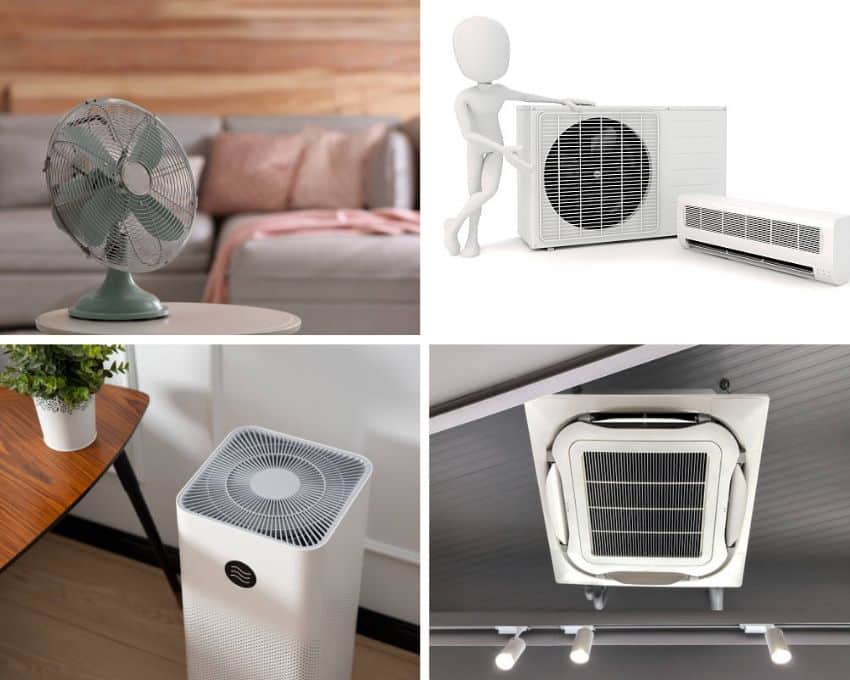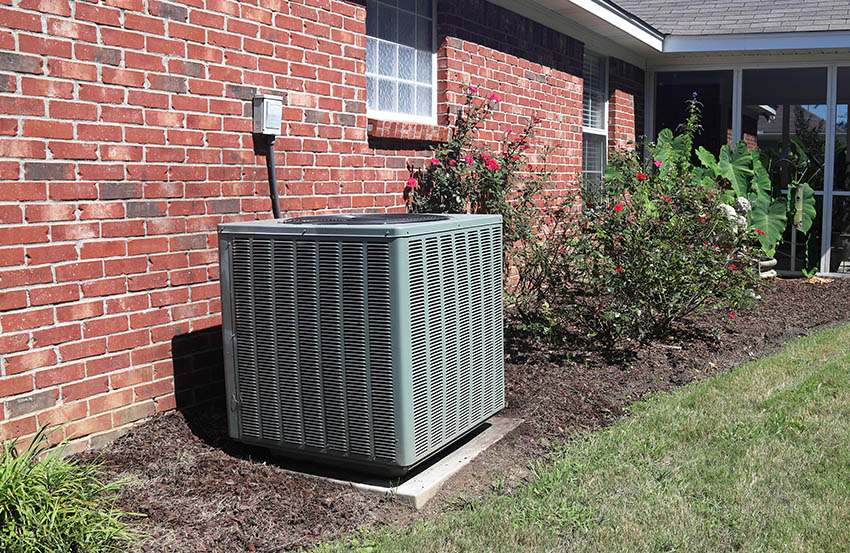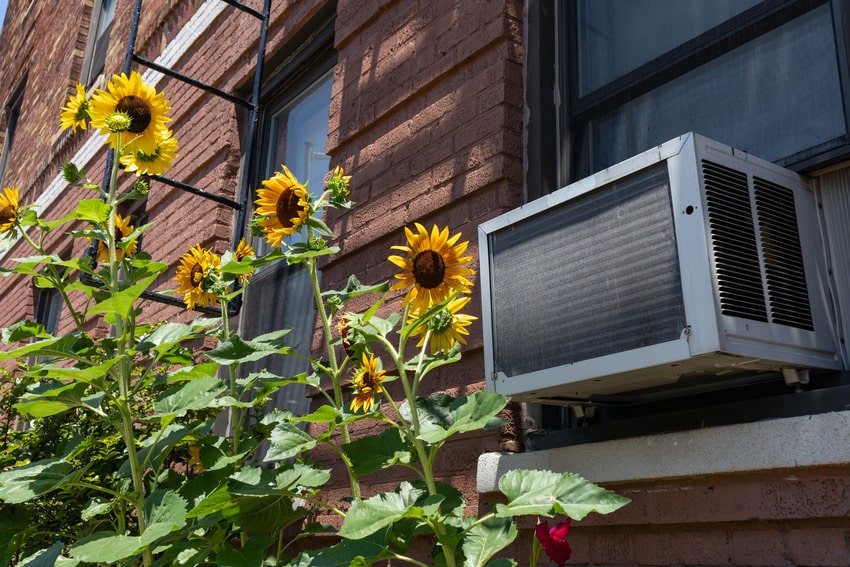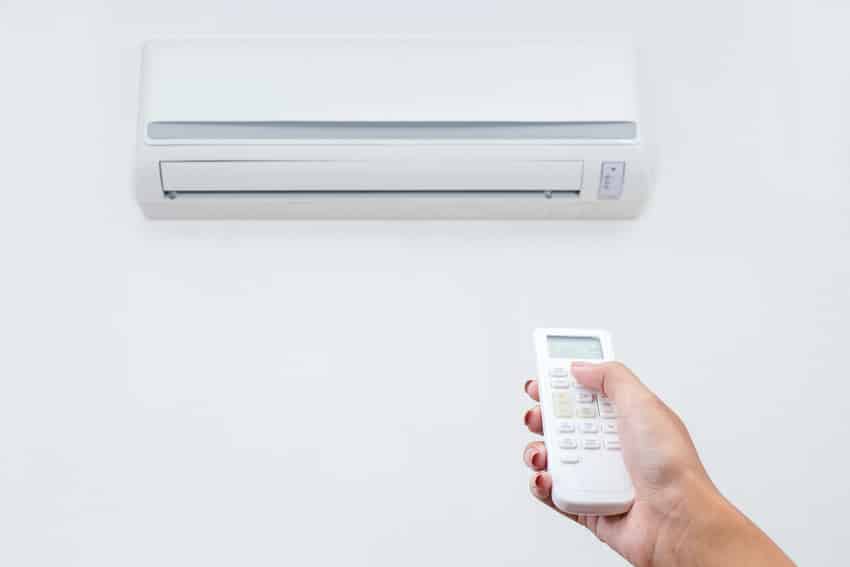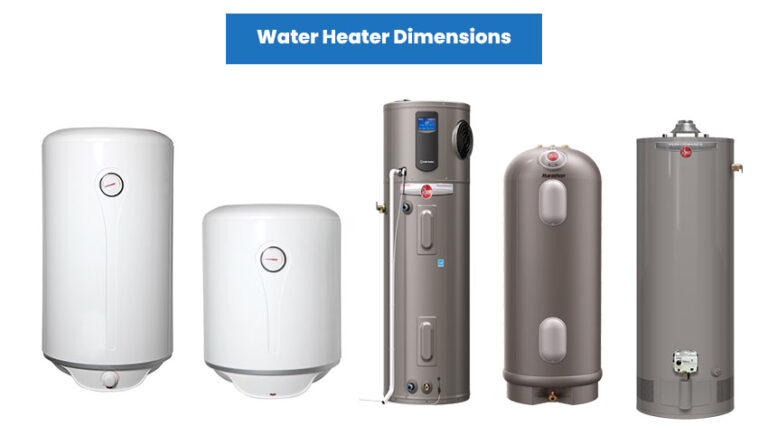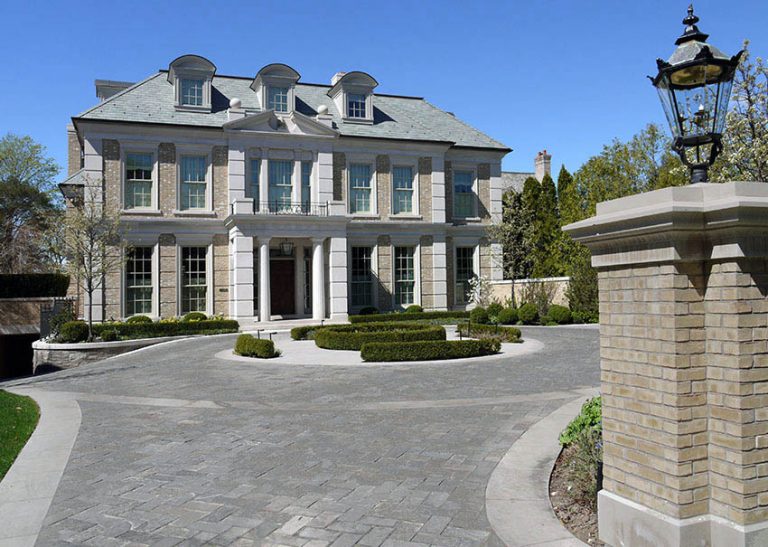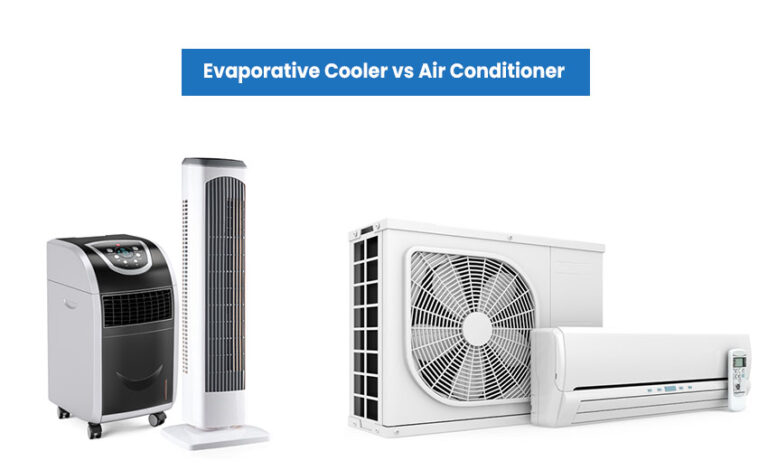Types Of Home Cooling Systems (Pros And Cons)
Beat the heat with various types of home cooling systems plus their pros and cons, including central air conditioning, window unit air conditioner and more.
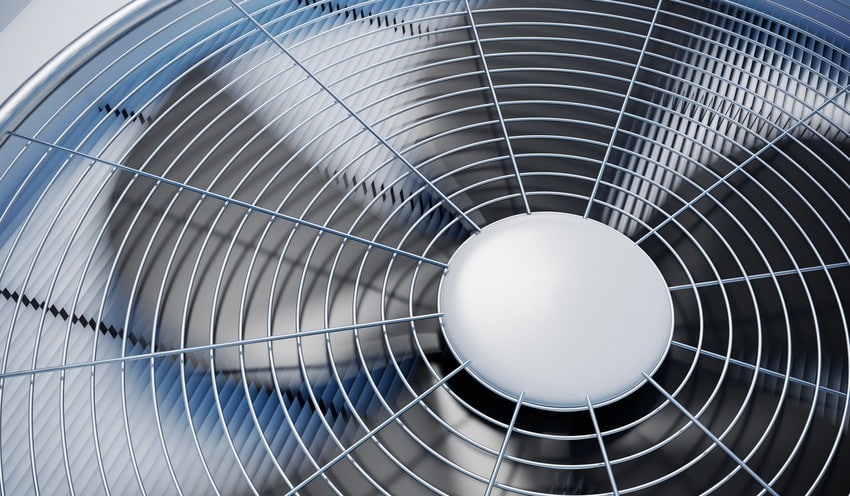 A climate control system is one of the best investments you can ever make for your home. However, as with all investments, it’s important to know the different types of home cooling systems (pros and cons) in the market.
A climate control system is one of the best investments you can ever make for your home. However, as with all investments, it’s important to know the different types of home cooling systems (pros and cons) in the market.
Most of these systems usually run on electricity but there are also some types that can run off of natural gas. The elements can be harsh on the exteriors of the home but even more so for the interiors which is something that you would have to consider carefully.
These units don’t come cheap and investing in the wrong type could easily burn a hole through your pockets. When done right though, it can make all of the difference in the world regarding the comfort and relief that it can provide especially on a hot and humid summer day.
New, energy-efficient appliances generate less heat and use less energy. -Cooling Your Home Naturally. (1994). United States: Energy Efficiency and Renewable Energy Clearinghouse.
Below is a guide on the various types of home cooling systems to get you started right away. [toc]
What Are The Different Home Cooling Systems

Central Air Conditioning
An HVAC unit or heating, ventilation, and air conditioning system is one of the more traditional options available in the home cooling system market. It comprises of one main central unit and involves an intricate system of ductwork in order to deliver air conditioned air all throughout the home.
The airflow is directed by the supply vents, and it can run off of electricity or natural gas. Any room with a vent can definitely get an appropriate amount of climate-controlled air through it.
Central air conditioning has a long lifespan which has been known to last for around a decade or more. Its performance is consistent; it runs off of pretty simple mechanics and is pretty easy to figure out.
Meanwhile, constant professional maintenance is required to get its basic mechanical and electrical components checked.
Window Unit Air Conditioner
Window unit air conditioners are pretty popular mainly because they are no trouble to procure. Market prices can also be pretty competitive which always works for an average consumer.
Besides, it also operates pretty simply. Warm air is exchanged for a cold one by getting it redirected to the exterior of the home.
Even small-sized units can easily cool up a space ranging from 100 to 300 square feet, while larger units can cool up spaces all the way up to 650 square feet. It’s also pretty easy to install as it requires nothing more than a window and some holes in the wall.
Still, a common downside to air conditioning units is their noise output that creates low noise but can be easily managed with the right kind of maintenance. Also, water drains out of the unit towards an exterior nozzle so maintenance can also be a breeze.
However, there are several downsides to this air conditioning system like their noise output ranging from easily tolerable to downright disruptive and irritating. Additionally, it can rust up metal implements or drip out in the street without the proper drainage system.
Moving it from one room to the other can also be a bit of a hassle. Getting it installed can be tricky if you don’t have any exterior support put up. There actually have been cases wherein units have actually fall out because of improper installation.
Ductless Mini-Split Air Conditioners
If you are after efficiency and minimal air loss for your home cooling system, then ductless mini-split air conditioners might be a good option for you to consider. This is mainly because this is basically a forced air system.
It can be installed easily to either sit on a floor or hang from a wall. The settings are also pretty easy to adjust and can be quite convenient as most of these units are remote-controlled.
Meanwhile, larger types of ductless air conditioners can support up to 4 air handlers, each of which can have their own thermostats. There is also little to no venting system required for this type of unit.
However, there are some cons to this type of system to consider. For starters, they are about 30 percent more expensive compared to central air conditioning systems out there.
These also cost about twice the cost of window-type air conditioning units, without including the cost of ductwork. Oversized or incorrectly positioned air handlers also usually result to short cycling which leads to a loss of energy and makes it extremely difficult to maintain the proper humidity and temperature levels.
Evaporative Air Conditioner
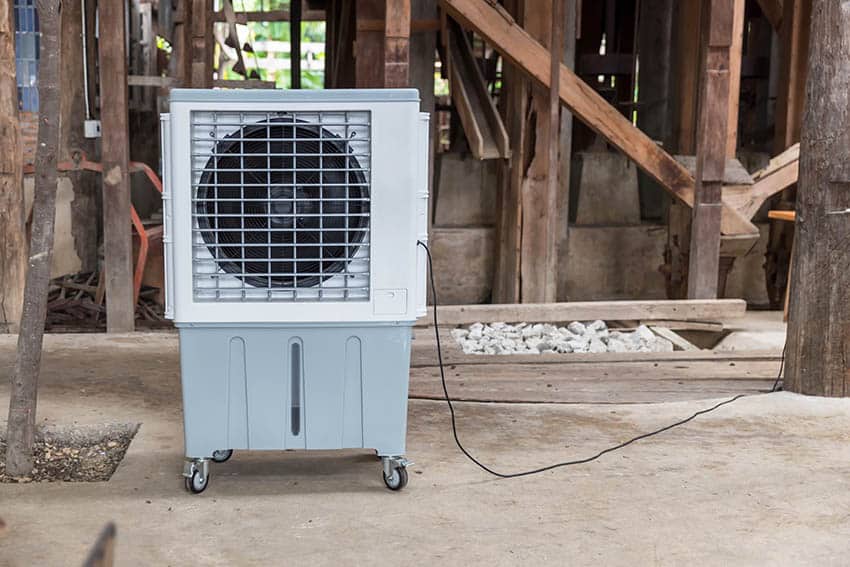
Units like this are also pretty easy to install and only have a few working parts so frequent maintenance won’t be an issue. They are also economical as they are more energy efficient.
They’re installed with moist pads so they are able to effectively trap and filter out dust, pollen, and other air particles. They can naturally add moisture to the home, which is helpful to keep fabrics, furniture pieces, and other wooden articles from drying out.
Although they’re pretty easy to maintain, they do require monthly replacements for the moisture pads which need to be constantly changed or the cooling system might not work as well as it should. Roof installation, regardless of the roof type, is also highly discouraged as this can deteriorate the overall state of the roof.
Furthermore, this can be a tough climb during extremely humid weather as too much humidity can affect the overall efficiency of the unit. There is also the issue of moisture buildup which can lead to corrosion on its metal parts and condensation can be an issue.
Finally, it requires huge openings in the wall or the roof which means that it poses a bit of a security risk once installed.
Radiant Cooling
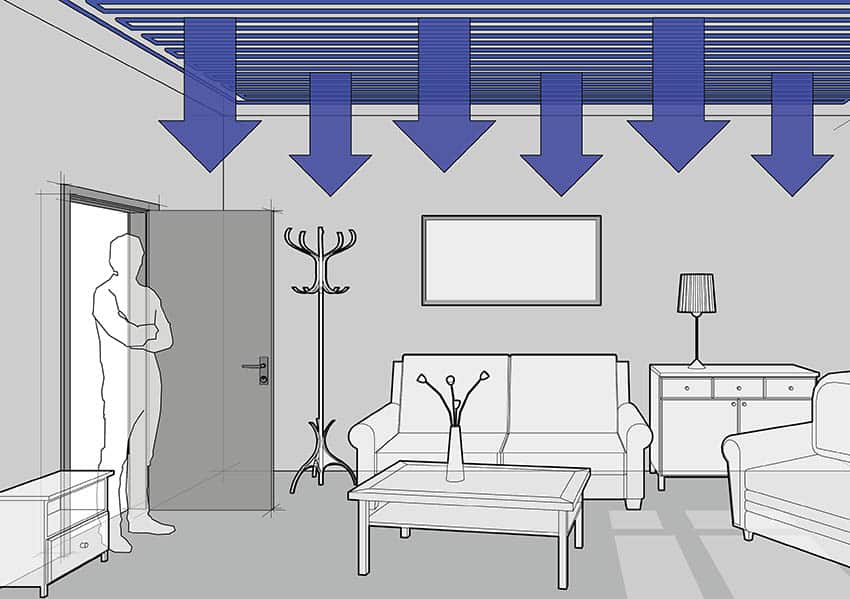
With the use of a brilliant system of radiant exchange, heat flows from the occupants, lights, and other objects in the home to the cooled surface. Through this process, the air is cooled when it comes in contact with the surfaces by way of convection.
These systems are energy-efficient, which are especially great for buildings with low energy builds or NZE (net zero energy) buildings. It uses water as its main cooling liquid through the use of a hydronic system which makes it very efficient as it surpasses the efficiency of air as a temperature conduit.
As a result, you can easily save up to 50% in energy saving costs compared to traditional air cooling units. Reduced ceiling heights and precast concrete flooring have also contributed a lot of furthering lowering the cost of these systems.
Despite its obvious pros, there is a well-known disadvantage to a radiant cooling system compared to forced air units. It doesn’t over the same filtration system compared to these other units and this is something to take into account especially if you live in a highly polluted area or during pollen season.
State-of-the-Art Cooling
One of the different types of home cooling systems is state-of-the-art cooling. These systems, in the form of evaporative cooling systems, are great for eliminating fumes and unpleasant odors.
They’re particularly great regarding obtaining fresh and filtered air so if you require constant ventilation in your home or workspace, then this is definitely the way to go.
It can effectively lower internal temperatures at a range of 5 to 12 degrees on any given day. It also consumes 80% less energy compared to traditional home cooling systems so that’s a big win right there.
Moreover, it goes in strides when it comes to innovation and stability. There is no need to keep spaces sealed shut to keep the temperature maintained. More than that, the installation can be pretty convenient.
The only downside to this system is it doesn’t nearly cool as much as the other traditional cooling systems out there so on an extremely hot and humid day, the temperature differences aren’t really that noticeable. [Source: yourhome.gov.au Heating and cooling]
Electric Fans
Before air conditioning systems were all the fad, their main precursor is the electric fan. They go as far back as 1880 until it was eventually commercially marketed and became a modern phenomenon.
Today’s designs are extremely diverse and innovative and have been customized to customers’ needs and preferences. They are extremely portable and comes in different sizes and varieties including a stand fan, a ceiling fan, a desk fan, and more .
Electric fans are extremely economical and cost-effective in the long run since they merely require low energy to keep them working. Likewise, they’re easy to clean since there’s no need to bring in any specialists or skilled labor compared to air conditioners. They can be carried literally anywhere and require no installation at all since they’re basically plug and play.
The only downside to electric fans is they aren’t completely effective at cooling. Sure, they’re great at circulating air but on a hot and humid day, it’s merely hot air recirculating.
There is also the issue of safety around small children. You’ve probably heard of cases wherein curious kids have stuck their fingers into the fan and have gotten them caught in the fan blades.
What Is The Best Home Cooling System?
That’s it for the Types Of Home Cooling Systems (Pros And Cons)!
To be fair, it’s largely based on your particular needs, the type of space you’re working with, and the costs you are willing to shell out for your home cooling system. Moreover, it also depends on your personal preferences as a homeowner but when you look at it from a general point of view, room air conditioners win the cake by a landslide.
They allow you to cool specific rooms or areas in the home and can be easily installed in your preferred room. Similarly, purchasing multiple units for different parts of the home is so much cheaper than cooling the entire space all at once.
There is no need to turn it on if no one happens to be in a certain room so energy consumption is kept on the down-low. Furthermore, you can strategically place the units around your house. [Source: energy.gov Home Cooling Systems Energy Saver]
did we miss any important cooling equipment or home air-conditioning systems? Let us know what you think and your recommendations in the comments. For more related content see our article about basement ceiling insulation.

